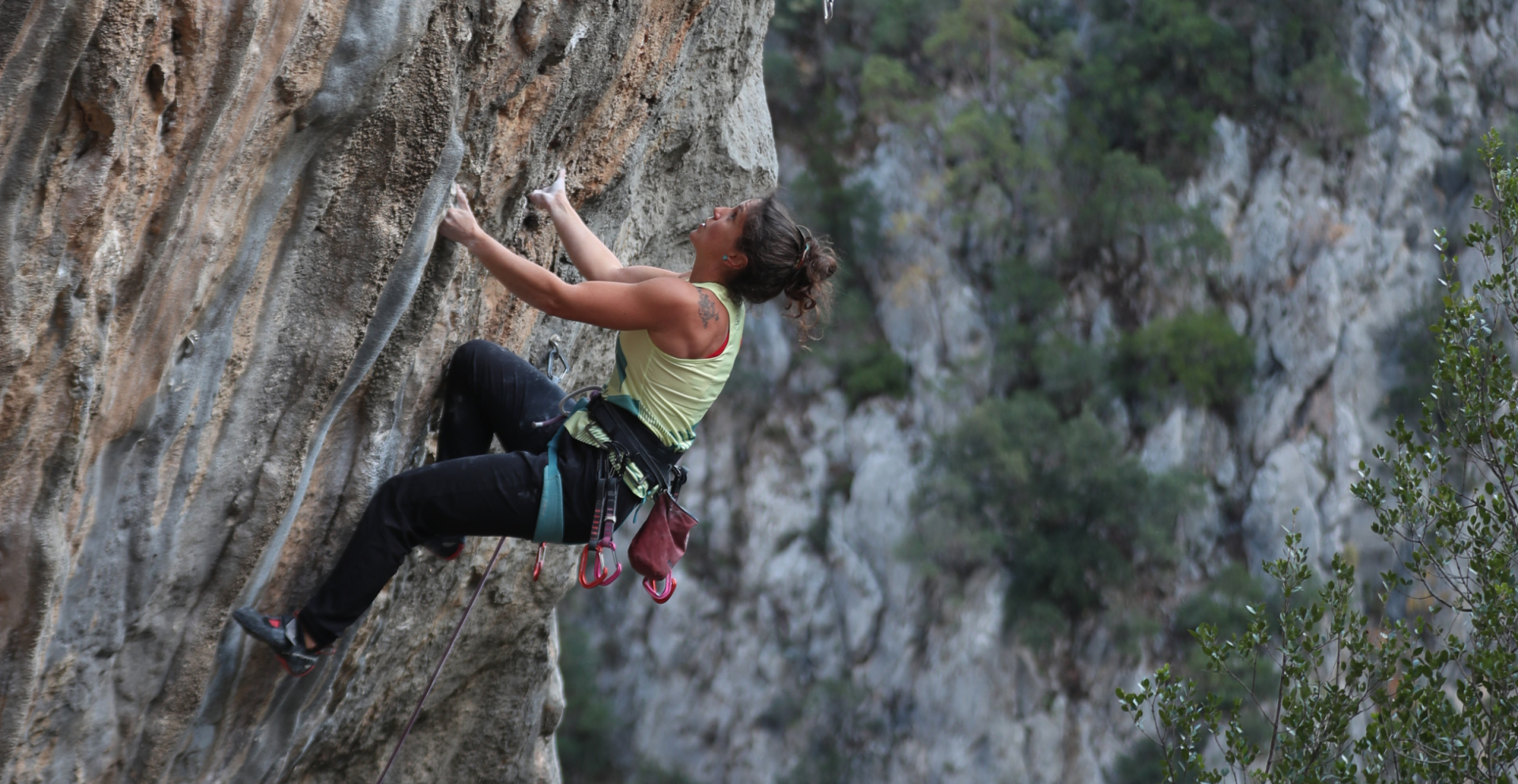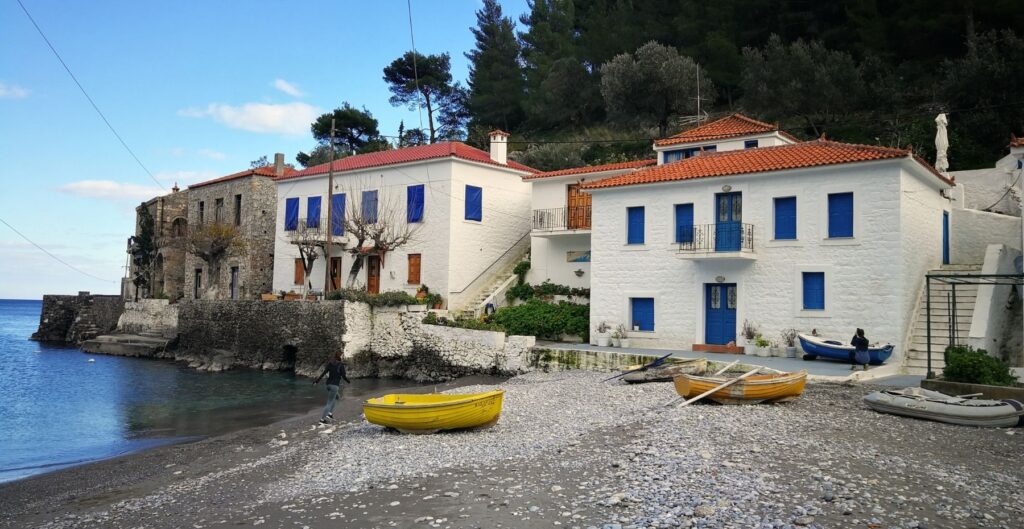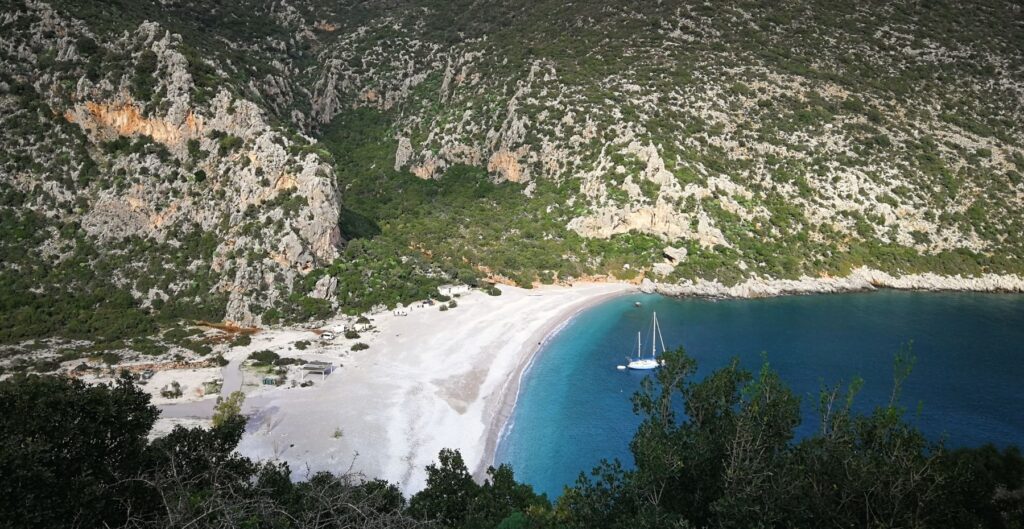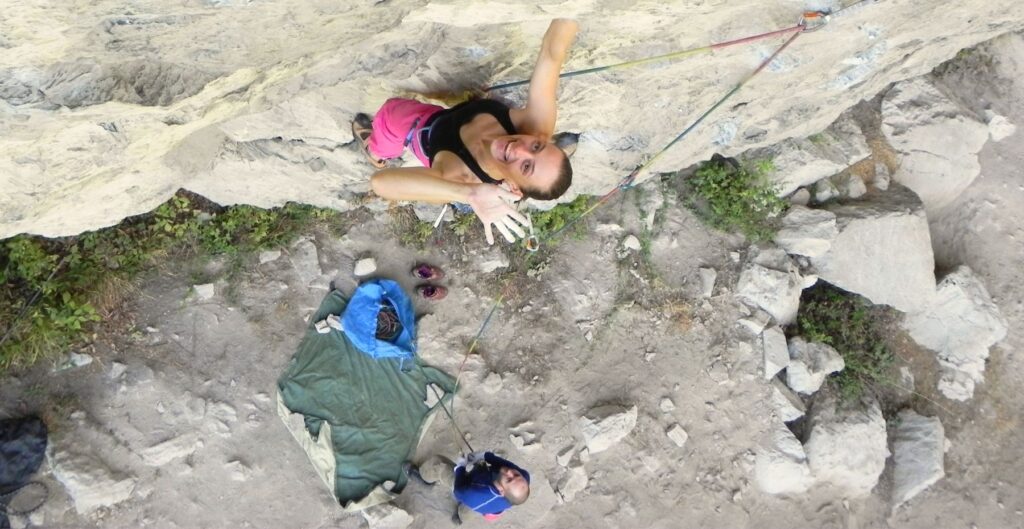
The medieval city of Braşov, in central Romania, is a touristic hub and a focal point for climbers. For the latter, it’s not the city itself that lures them, picturesque and vibrant as it may be, but the many limestone crags that surround it.
So, what is it exactly that makes the area of Braşov the mecca for climbing in Romania that it is? There are a bunch of reasons…
To start with, it has an outstanding density of climbing crags, each with its own personality. I’m talking about a bunch of top-notch climbing destinations all within a 30-45 minute drive; sometimes a lot less. You can reach some of them by city bus or even on foot from the city center. Pretty cool, right?
These climbing crags are at different elevations and with various sun exposures, which makes it possible to climb around Braşov for roughly three thirds of the year. Sometimes even on warm winter days.
There are legendary crags with king lines, easy routes for first-timers, open projects if you’re looking for a challenge. You’ll find long and pumpy routes, short and bouldery ones, loads of puzzling cruxes, and an overall chill vibe.
Then you have the fact that it’s not too far from capital Bucharest (150 km from Bucharest International Airport). And now, thanks to the newly opened Braşov International Airport (GHV), it’s even easier to fly here.
So here it is, a list of the best climbing destinations near Braşov that are worth checking out if you’re in the area.
This article lists sport climbing crags only. There are plenty of multi-pitch routes in the area as well, but I will not go into that now. Nor will I list all the climbing spots near Braşov. For now, I’ll stick to the most popular crags. Sure, some personal opinions do come into play here, but that’s just how it is when you call this place your home.
In this article
Climbing near Zărneşti

The town of Zărneşti, about 30 km from Braşov, sits at the foothills of the Piatra Craiului Mountains, which are undoubtedly some of Romania’s most impressive.
With so much rock everywhere, it’s no surprise that Piatra Craiului Mountains were once a hub for multi-pitch climbing. Now, they’ve become a hub for sport climbing. Man, I could not be prouder to call this place my home!
There are several sport climbing areas near Zărneşti, within the Piatra Craiului National Park – Zărneşti Gorges, Colţul Chiliei, Gălbenoasa, Crângul Ciorii, and Măgura. The first three are the most popular. So, in this article, I’ll stick to those.
The mountains and their foothills, including the nearby mountain villages, are protected inside the Piatra Craiului National Park. Visitors need to pay an entrance fee. You can buy tickets online or from the blue ticket vending machines next to the post office in the center of town and the one next to the visitor center outside of town (on the road to Plaiul Foii). You can also buy tickets from the park rangers on the way to Zărneşti Gorges.
Zărneşti Gorges

Photo by Szidonia Lorincz
This is perhaps my favorite climbing destination near Braşov. Sure, the fact that I live right next to it plays a huge role. But even after years of climbing here I still can’t get enough.
In Zărneşti Gorges (Prăpăstiile Zărneştilor), you’ll find some of the first hard routes ever to be bolted in Romania, absolute king lines. Local climbers continue to bolt new routes.
>> Read more: Climbing in Zărneşti Gorges
The gorges tend to dry out pretty quickly after rainfall. However, after heavy rainfall, some of the routes can get wet and they can stay that way for quite some time. The upside, though, is that the largest sector in the gorges (La Refugiu sector) is relatively sheltered from rain and hardly ever gets wet. In fact, it’s possible to climb on some routes here even while it’s raining.
The gorges sit at about 900 meters altitude and the sectors have various orientations. Save for a couple of sectors that get sun during midday, most of the routes are in the shade. There’s usually a cool breeze during summer, too.
Zărneşti Gorges is a popular tourist attraction in the area, mainly because they can be easily reached by car (the parking space is only a couple of minutes away). Well, this means crazy crowds during peak season (July and August), especially on weekends. Most of the sectors are next to the road, and these hordes of tourists can become a nuisance.
Sport climbing routes in Zărneşti Gorges
There are around 100 sport climbing routes in Zărneşti Gorges. Most of them are in the 6b to 7a+ range, but you’ll also find a pretty neat selection of 7c’s and 8a’s.
There are several climbing sectors along the first half of the gorges, each with its own peculiarities – perfectly vertical faces, overhangs, a roof even. There are crimps, pockets, jugs, cracks, you name it! You’ll find short, bouldery routes and long, pumpy ones that will really put your stamina to the test.
The biggest and most visited sector is La Refugiu. This is the crag behind the Mountain Rescue shelter and offers something for everyone, from first-timers who take their first steps on rock to experienced climbers looking for some challenging routes.
Access
From Zărneşti, take the road towards the mountain. You should see signs for the village of Măgura and Prăpăstiile Zărneştilor. When you exit town, the asphalt ends and you’ll drive on a gravel road from there on.
You’ll pass a designated camping place on the left where you can pitch your tent for free and you can also build a fire. Then you’ll reach a freshwater spring (Botorog Fountain) where you can fill your water bottles. Next to it, there’s a crossroad. The road to the left goes up to the picturesque mountain village of Măgura. Continue straight to reach the gorges.
You can park right before the barrier (unauthorized vehicles are not allowed in the gorges).
Best time to climb in Zărneşti Gorges
It’s possible to climb in Zărneşti Gorges from mid-spring till mid-autumn. These gorges are highly regarded as a summer climbing destination, all thanks to the shade and cool breeze they offer.
Colţul Chiliei

Photo by Szidonia Lorincz
Also near Zărneşti, Colţul Chiliei is a newer crag developed in 2019 by local climbers. It immediately became popular among climbers from Braşov, Bucharest, and many other parts of the country. This is thanks to a number of reasons.
First, most of the routes are in the 6b+ to 7a+ range, which makes this crag excellent for getting some mileage. In fact, if you’re up for the challenge, I dare you to try to climb as many of these routes as you can in a day. It’s possible to climb almost all, but it’s freaking hard.
Secondly, the crag lies in the forest, away from touristic paths. It’s behind an old hermitage – Colţul Chiliei. So, the only people you’ll find here are climbers.
Then, it has some unique limestone features – pockets after pockets after pockets, as well as pebbles of all shapes and sizes that seem glued together. Finding the best pockets is not easy, as most of them look alike. That’s why so many of these routes can be quite pumpy.
The landscape is sublime – large boulders covered in dark green moss lying everywhere, sun rays making their way through the thick canopy, an earthy smell in the air, loads of silence. Really looks like something out of a fantasy movie.
The crag tends to stay dry even after heavy rainfall. There is moss on the upper part of the routes and that can be damp after heavy rain.
Sport climbing at Colţul Chiliei
There are currently three sectors here, all next to one another. The main sector is the first one you’ll reach from the path. It has about 14 routes from 6a to 7b+. Following the path from here, you’ll find some easier routes from 5a to 6b, as well as some overhanging routes from 6c+ to 7a+. There’s another small sector further up, with grades from 7b to 7c+.
Access
From Zărneşti, take the road to Plaiul Foii. About 4 km from town, there’s a road on the left going up to the Colţul Chiliei Hermitage (there’s a sign on the side of the road). You can park at the bottom (location here) or you can drive a bit uphill and park at a crossroads (location here). From there on, the road is only accessible by 4×4.
Take the road up and you should reach the hermitage in 30-45 minutes. Just before the hermitage, there’s a freshwater spring where you can fill your water bottles.
Enter the hermitage and go straight through it towards the forest, following the path to the old hermitage cave. As soon as you enter the forest, turn right, going slightly downwards. You’ll see some blue dots on the trees. Follow these markings and the visible path all the way to the crags. It should take about 10 minutes to get from the hermitage to the crag.
Best time to climb at Colţul Chiliei
Summer months are the best time to go climbing at Colţul Chiliei. The crag sits at about 1,100 meters, tucked away in the forest, and faces north-west. Therefore, it hardly gets any sun and temperatures are cool even in summer.
Gălbenoasa Crag (Curmătura)

Another fairly new crag near Zărneşti, bolted by a local climber during the pandemic, Gălbenoasa sits in an alpine setting and is simply spectacular. Quite challenging, too.
This climbing destination gets its name from the huge yellowish crag that lines Piatra Mică (“Small Rock”), part of Piatra Craiului Mountains. It’s close to Curmătura Chalet, the most visited in the Piatra Craiului Mountains thanks to picturesque position.
Gălbenoasa crag lies at about 1,500 meters altitude, faces south-west, and gets a lot of sun.
The crag tends to dry out quickly but its many cracks and pockets can get wet after long periods of rain.
It’s a 1 hour 30 minutes to 2 hours hike to get there. The crag is above the touristic path, not visible, so it’s very quiet. Not even climbers come here often (the access is a bit daunting), so there’s a good chance it’ll only be you and perhaps a few curious chamois (they do wander about there a lot).
Sport climbing at Gălbenoasa (Curmătura)
There are currently about 18 routes here and pretty much all of them deserve five stars. There’s potential for more, too. The routes are pretty challenging; most of them are long (30+ meters) but are a couple of short bouldery lines, too.
You’ll find impressive routes from 7a all the way to 8b and possibly even more. That’s right, there are still some unclimbed lines here. The bulk of the routes are in the 7c to 8a range, though, so better bring your A game.
Access
From Zărneşti, take the road to Zărneşti Gorges. Park at Botorog Fountain and take the path up to Curmătura Chalet. There’s a freshwater spring in the forest before Zănoaga Meadow where you can fill your water bottles. After Zănoaga Meadow, when you reach about two thirds of the path to Curmătura Chalet and when you can see the corner of the Curmătura Meadow just below the path, turn turn right and go uphill until you reach the crag (approximate location here).
It’s best if you go with someone who knows the way as there is no evident path, signs, or cairns to lead the way. So, if you’d like to check out this crag, feel free to contact me.
Best time to climb at Gălbenoasa
Summer months are the best time to climb at Gălbenoasa. Due to its altitude, temps stay rather low here. Do keep in mind that the weather can change drastically up there, so pack layers and be prepared for spontaneous T-storms. All in all, there’s a pretty short window for climbing here so best take advantage of it.
Belvedere Crag (Pârâul Rece)

Close to Pârâul Rece, a resort between Predeal and Râşnov, Belvedere is an emblematic sport climbing crag with high-quality gray limestone. These perfect, vertical walls seem to have been cut by a gigantic knife. Sharp crimps, cracks, and small pockets abound; plus some unique features – tiny flakes and bumps that you’ll love to hate. All of these have great friction; so good that it may leave your fingertips bleeding and your shoe tips destroyed. But man, it’s so worth it!
Belvedere crag lies at about 1,200 + meters altitude and faces south. It tends to dry out fast after rain showers. But after long periods of rainfall, water may seep through the cracks, making most of the routes unclimbable. There are no water sources in the area so make sure you bring enough.
Sport climbing at Belvedere (Pârâul Rece)
There are well over 50 sport climbing routes at Belvedere. You’ll find something for all levels, from 5a all the way to 8b+, some unclimbed lines as well. The bulk of the routes are in the 6b+ to 7c+ range, which makes it great for everyone.
There are two sectors here, next to one another. The main sector is the first one you reach coming up from the path and has taller routes that get a lot of sun. There’s usually shade at the bottom. Next to it, the sector in the forest has shorter, crimpy, and cruxy routes that in the shade all day.
Access
You can either drive from Braşov to Râşnov and Predeal or from Braşov to Predeal and then turning right towards Râşnov.
Coming from Râşnov on DN73A, you’ll reach the small resort of Pârâul Rece in about 14 km. Drive past it. Before beginning the descent to Predeal, there’s an old road on the right with a barrier. Park there (location here). Follow the path with yellow stripe markings and you’ll get to the crag in about 15 mins.
Best time to climb at Belvedere
The best time to climb at Belvedere is spring till autumn. The main crag may become too hot for climbing during warm and sunny summer days. But it’s still possible to climb at the smaller sector in the forest in summer. Because it’s a southern crag, it may be possible to climb here on warm winter days, too.
Tamina Canyon

A popular tourist attraction in the Piatra Mare Mountains, Tamina forms a spectacular canyon with a series of five waterfalls that can be seen up close from the man-made walkways. But for climbers, that’s not the main attraction. The limestone cliffs to the left and right of the mouth of the canyon are the bomb during summer months.
The crag sits at about 1,100 meters altitude and faces south. But thanks to the surrounding forest and thick canopy, the sun hardly ever reaches the cliffs, making it an excellent summer climbing destination. Vertical and slightly overhanging routes prevail, mostly crimpy and cruxy.
The cliffs can get wet after serious rainfall and can stay wet for longer if there’s been heavy rainfall. There are no water sources in the area, save for the stream that runs through Tamina Canyon but its quality is questionable, especially during peak touristic season. So make sure you bring enough water, as well as some layers because the weather can be unpredictable.
Sport climbing at Tamina Canyon
You’ll find over 60 sport climbing routes at Tamina.
There are two climbing sectors. The first is the one you reach coming down the path, right before the canyon. There’s a bigger sector a little bit further up. The first sector is in the tourist path, which can get crowded during weekends. The main sector, though, is larger and away from tourists’ eyes.
Both sectors offer routes for everyone, from 5c to 8b+, as well as a good list of open projects.
Although this particular climbing destination does offer a little something for all levels, the bulk of the routes is in the 7b to 8b+ range. So, overall, it’s a pretty challenging crag.
At the first sector, Cascada (“Waterfall”), there are a couple of warm-up routes in the 5c to 6a range, but the rest of the routes are from 7b+ to 8b+.
You’ll find a wider variety of routes at the main sector, Faleza Mare (“Large Crag”), which is the most popular and most climbed. But, even here, most of the lines are from 7b+ to 8b+ and possibly even more.
Access
From Braşov, take the road to Predeal (DN1). About 20 km from Braşov, the path to Tamina is on the left (location here), a couple of kilometers before Timişu de Sus. The parking space is on the opposite lane, so you need to enter Timişu de Sus to turn the car around.
There are signs on the side of the road and all you have to do is follow the path with blue stripe markings all the way to the canyon. It’s about a one-hour hike to get to the crag.
Best time to climb at Tamina
Tamina is a summer climbing destination thanks to its elevation, shade, and cool breeze coming down from the mountain. Because it hardly gets any sun, the ideal window is warm and dry weather.
Aboland (Postăvaru)

A little bit uphill from Râşnov Gorges, with their multi-pitch routes and bungee jumping facility, you’ll find the climbing area at Aboland.
More commonly known as simply Postăvaru (from the Postăvaru Mountains where it lies), this is a preferred climbing destination in early spring. The crag faces south and the climate is a bit friendlier, which makes it one of the first climbing destinations near Braşov that climbers visit at the beginning of the season. It’s also great in late autumn, when it might be too cold in other places.
The crag is also popular because it offers a variety of routes for all levels. In fact, you’ll find a wide array of climbing grades, just perfect for getting some mileage.
Slabs and face climbing are what describe it best. If you’re into slab climbing, this is a great place to visit and level up your smearing technique.
Sport climbing at Aboland
There are well over 100 sport climbing routes at Aboland. That’s a pretty impressive number, but you need to consider the fact that many of these have yet to be climbed.
You’ll find quite a few sectors here, all pretty close to one another. All in all, Aboland offers routes from 5a all the way to 8b and perhaps even more. Quite amazingly, the bulk of the routes are in the 6b to 8b range. Now that’s quite the range!
The most popular climbing sector at Aboland is Sector D, the first one you reach coming up from the path. This sector has the most ascents, since it has both easy and hard routes on some aesthetic lines. There are several more sectors to the right and left, as well as above Sector D.
Access
Head to Râşnov Gorges (“Cheile Râşnoavei”), about 30 km from Braşov. Pass the gorges and drive another 600 meters until you see a picnic area with gazebos on the right and a pasture going uphill on the left. Park there (location here).
You’ll see the cliffs on the left. Go up through the pasture, aiming for its highest left corner. You should begin to see a visible path as you advance through the pasture.
Best time to climb at Aboland
The best time to climb at Aboland crag in Postăvaru Mountains is early spring and late autumn. The crags get a lot of sun and it can become too hot to climb on warm days.
Pietrele lui Solomon

Just outside the city of Braşov, Pietrele lui Solomon (“Solomon’s Rocks”) is a very popular recreation spot for locals, with barbecue areas, a crystal-clear spring running between them, both sun and shade, and a cool breeze blowing down from the mountain.
It’s also a very popular climbing destination, all thanks to its proximity to the city. There are several sectors with different sun exposures and a variety of styles – slabs, vertical faces, slight overhangs, long and pumpy, short and bouldery, pretty much the whole package.
There’s also a newly developed sector that’s dedicated to beginners, with a bunch of short, easy routes. But there are some pretty challenging routes in the area as well.
Sport climbing at Solomon
In total, there are over 90 sport climbing routes at Pietrele lui Solomon, spread across several sectors. It’s safe to say that you can find an impressive array of climbing grades that will please complete beginners as well as challenge-oriented climbers.
The most popular climbing sectors at Solomon are Brâna, Cariera, Traverseu, and Faleza Junilor.
Cariera (“The Quarry”) is the first sector you reach as you go up the dirt road, with several routes in the 6b to 6c+ range.
The most impressive sector has to be Brâna (“The Ledge”), which stands tall right in the middle of the valley. There are over 18 sport climbing routes here, almost all of them emblematic, from 7a all the way to 8b and possibly even more. Most of them are in the 25-meter range.

Left of Brâna sector, there’s the smaller Traverseu (“Traverse”) sector, with a few short, powerful, and bouldery routes as well as a traverse (called “The Traverse”, duh) at the base that gives the sector its name. The Traverse is about 7c and is a preferred training route for local climbers.
Behind Brâna sector, there’s a newer crag – Faleza Junilor (“Juniors’ Crag”). Just as the name suggests, there are mostly easy routes here, from 5a to 7a+. The bulk is in the 6a to 6b range.
Gruenwald sector also deserves a mention. It sits right above the parking lot and faces south, which makes it a great choice during cold days.
Access
From the old city center of Braşov, take bus 50 to Pietrele lui Solomon. The bus stops right before the recreation area. From there, follow the dirt road or the path along the valley and you’ll begin to see the crags.
Best time to climb at Solomon
The best time to climb at Pietrele lui Solomon is spring and autumn. However, some sectors get a lot of sun, which makes it possible climb there on warm winter days.
Tâmpa Crag

Tâmpa is the famous small mountain that rises above the city of Braşov; the one with the emblematic “Braşov” sign at the top. As you look at that sign, towards the right there is a crag that is a favorite among local climbers in early spring and late autumn; sometimes in winter, too.
The crag lies at an altitude of almost 900 meters and faces south. It gets a lot of sun and, due to its concave shape, gets very warm. That’s why it’s so perfect when it’s colder outside.
Sport climbing at Tâmpa
There are over 20 sport climbing routes at Tâmpa crag. There is one main crag, overhanging in the middle and vertical on the sides, with routes from 6a+ to 8b.
Since this is an old crag, some of the routes are polished and there are some chipped holds, too. They’re quite physical and sketchy; pockets prevail and long, powerful moves prevail. The view is not too shabby, either; just imagine overlooking the whole historical center of Braşov while you climb, as well as from the base of the routes.
There are some old and easy routes here, on the side of the crag, but there’s loose rock and the quality of the bolts is questionable. So best stick to the main crag.
Access
It’s a 30-45 minute hike to get from the old city center of Braşov to the crag. First, you need to get to the pedestrian walkway at the foothills of Tâmpa. You can begin the ascent either from here or here, following the touristic path with blue stripe markings all the way to Şaua Tâmpei (“Tâmpa Saddle”). From there, go left following the gravel road towards Tâmpa Peak. You’ll soon see the crag to the left. Pass the crag and then turn left, leaving the road and tourist paths. Go down a path until you reach the crag (location here).
Best time to climb at Tâmpa
The best time to go climbing at Tâmpa crag above Braşov is from late autumn to early spring. That’s right, it’s possible to climb at Tâmpa in winter, too (as long as it’s sunny, not too windy, and the temps aren’t too low).
*Tiny disclosure: this post contains affiliate links. If you make a purchase, I may earn a small commission to help fund my climbing trips.
**Cover photo by Szidonia Lorincz




